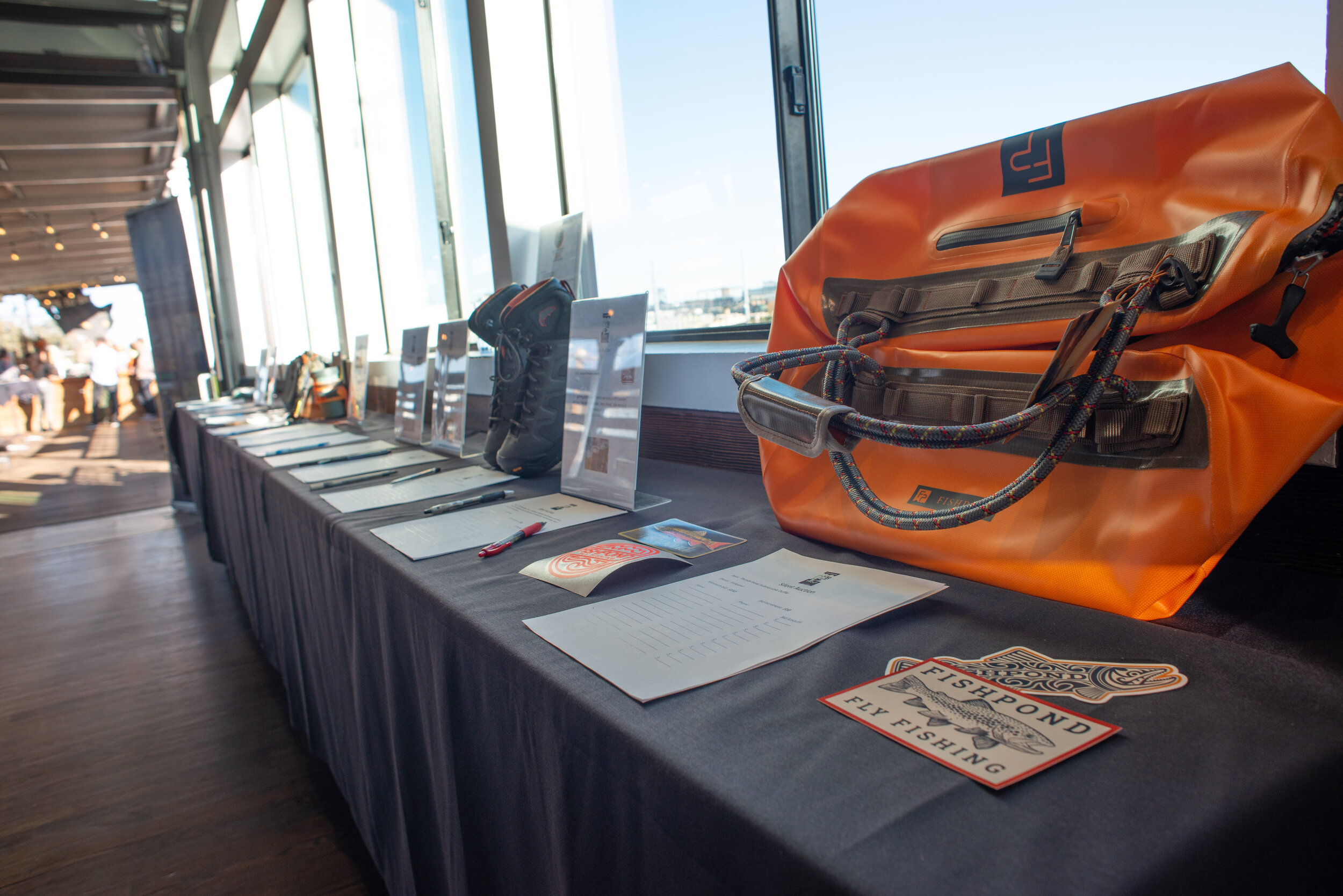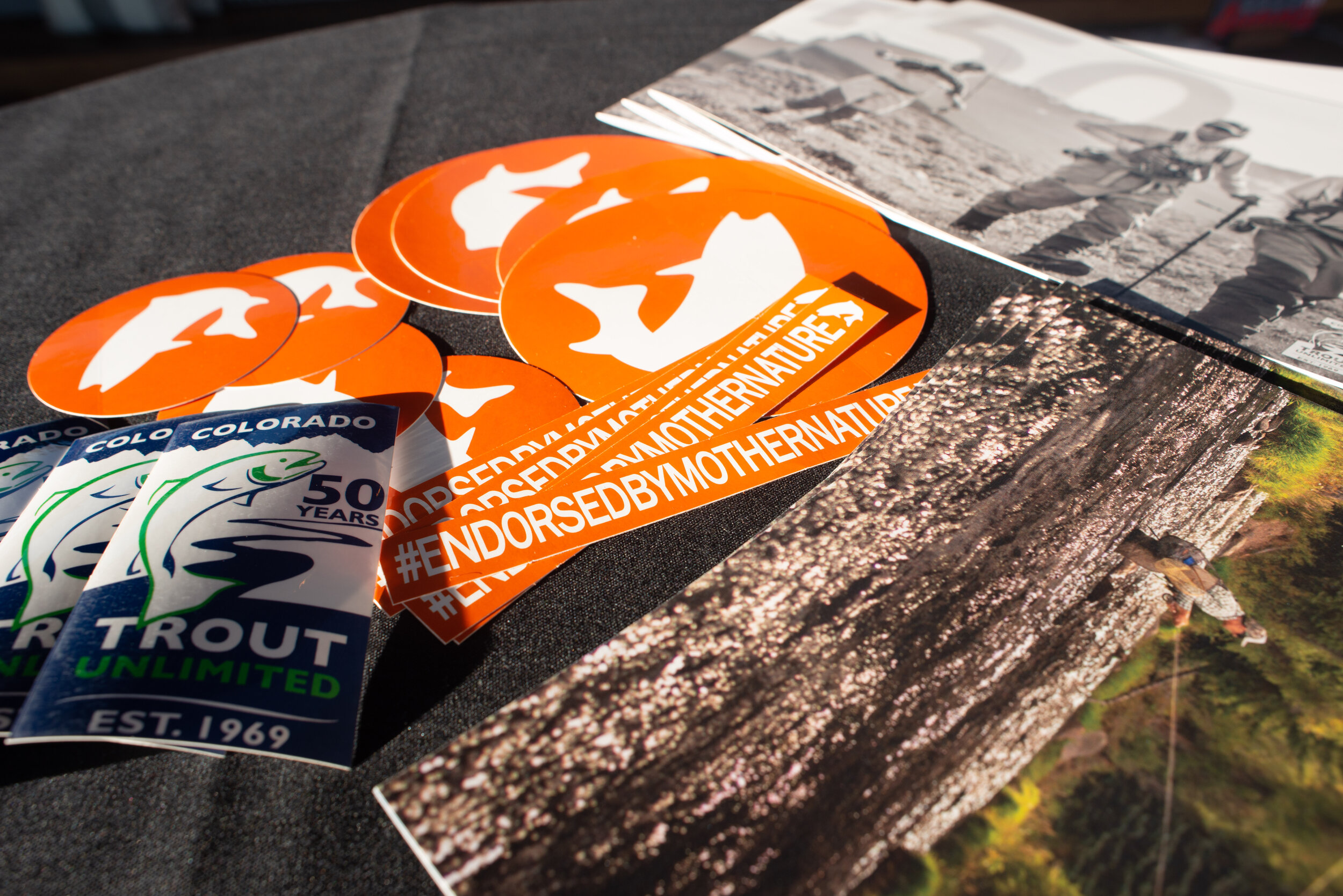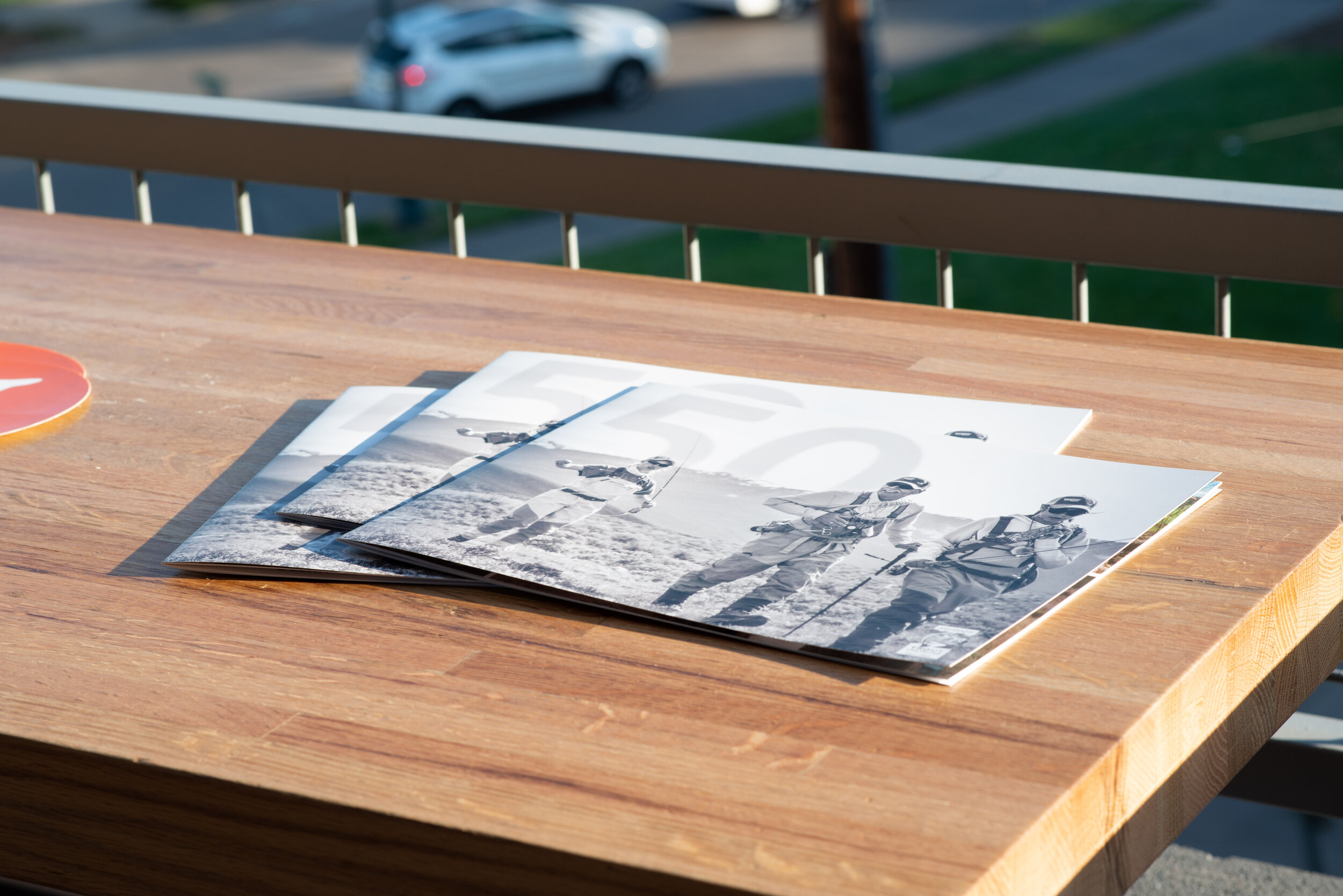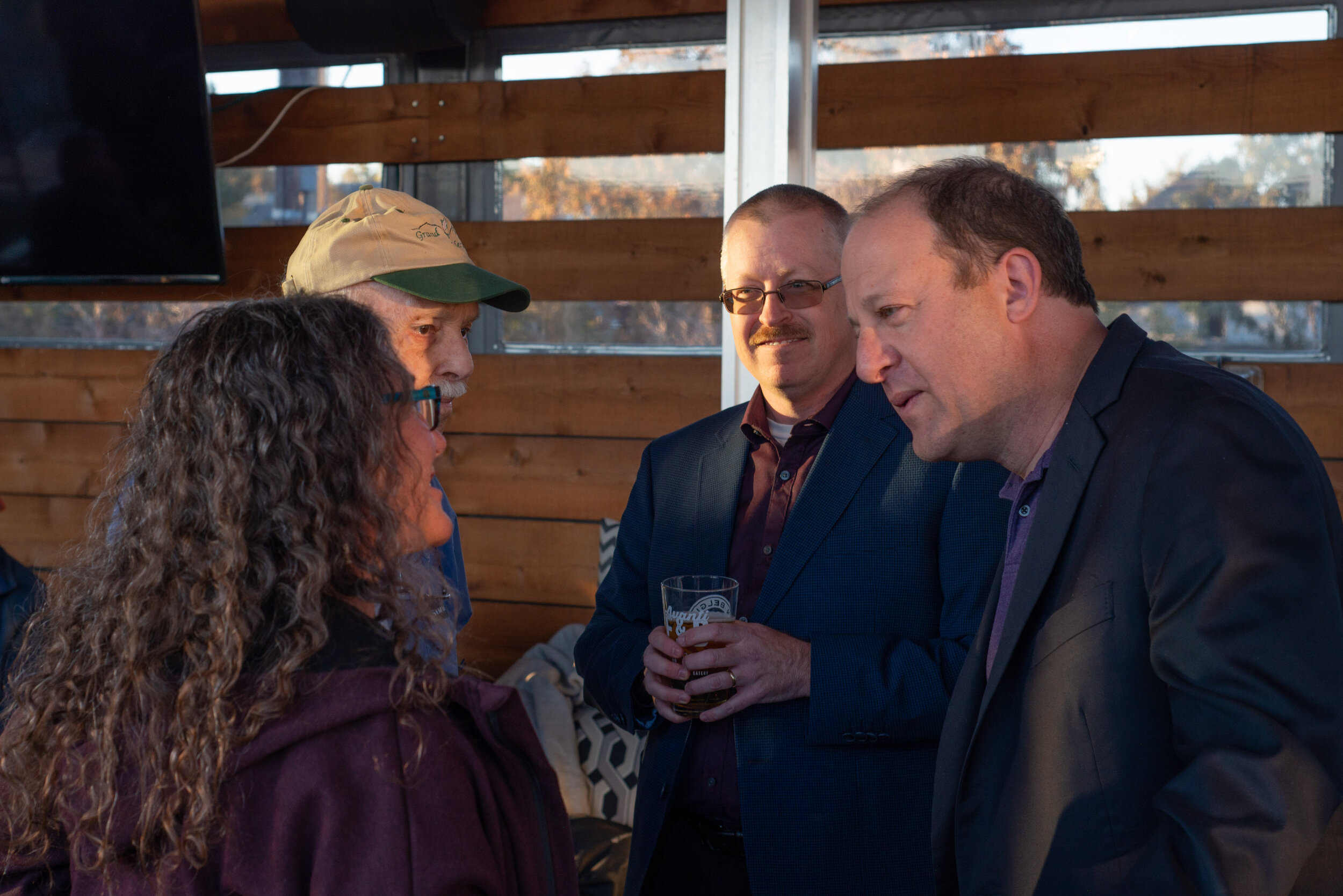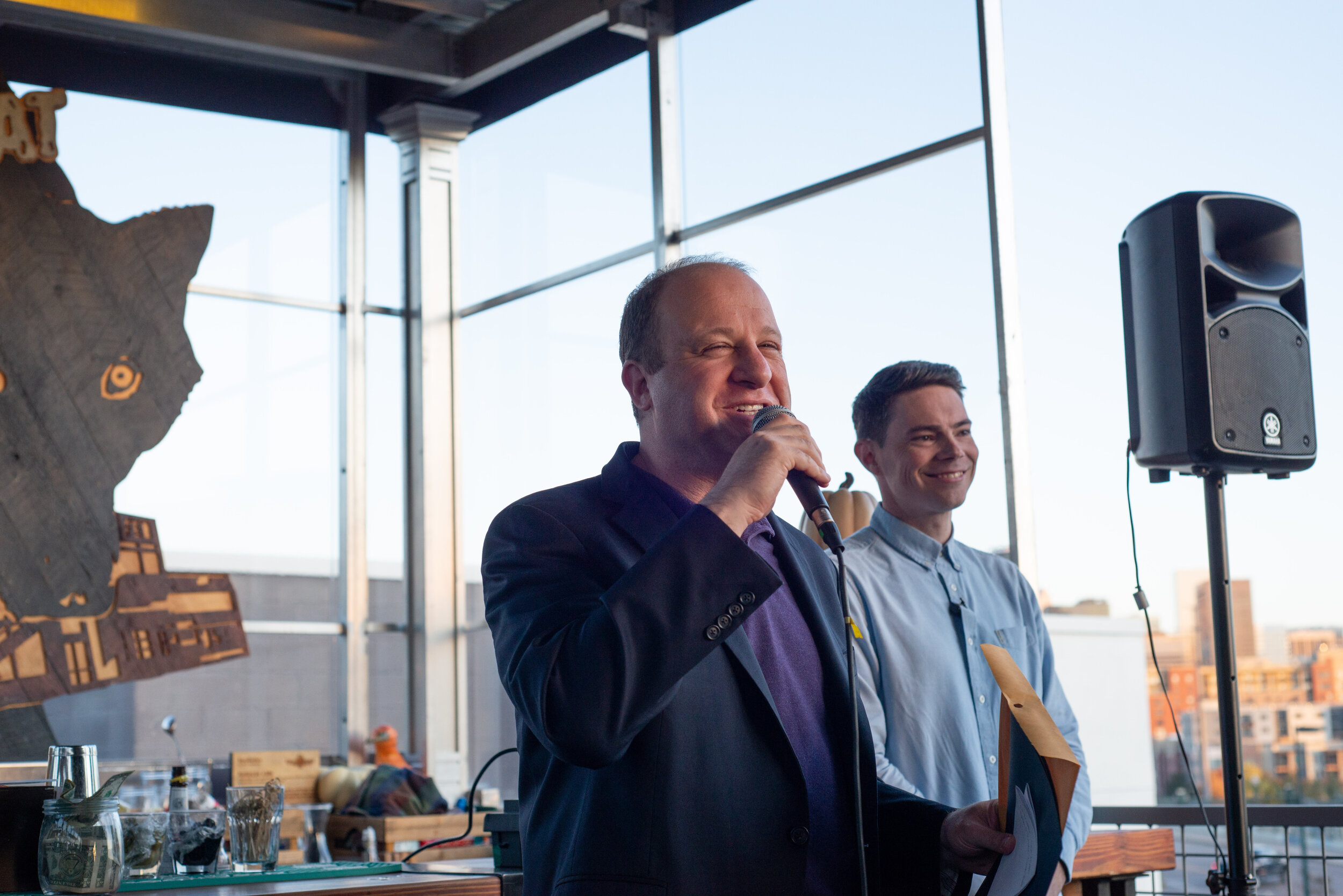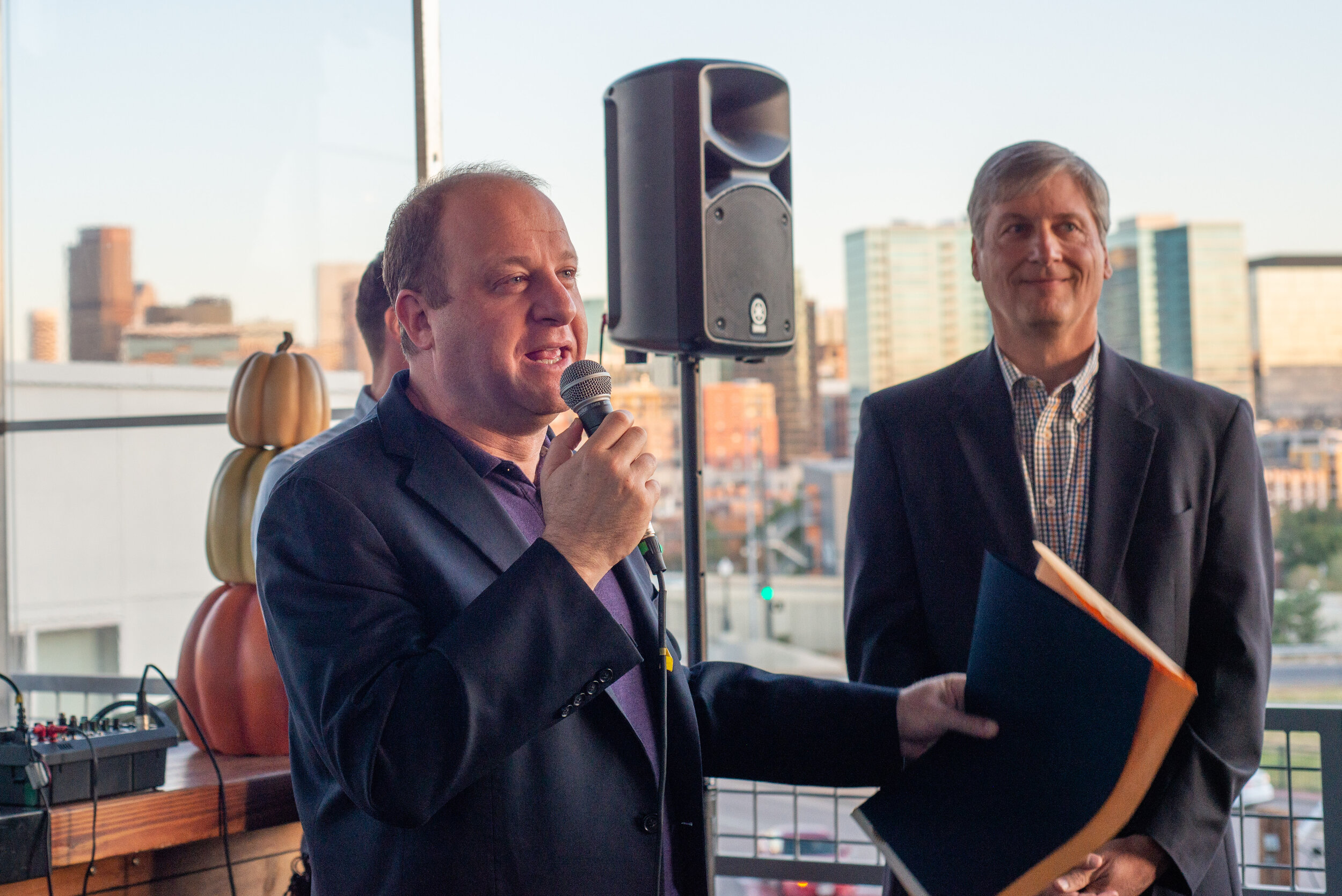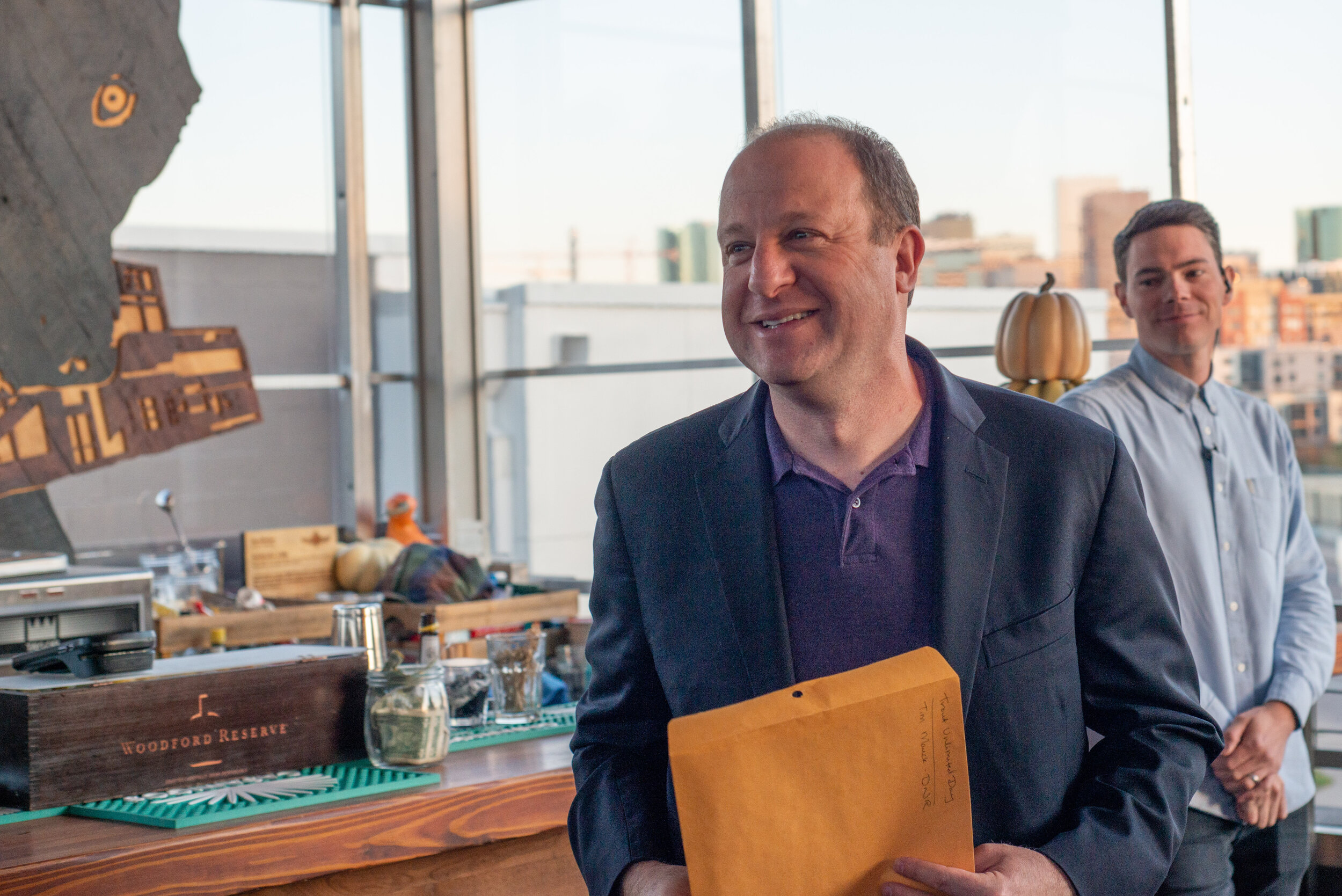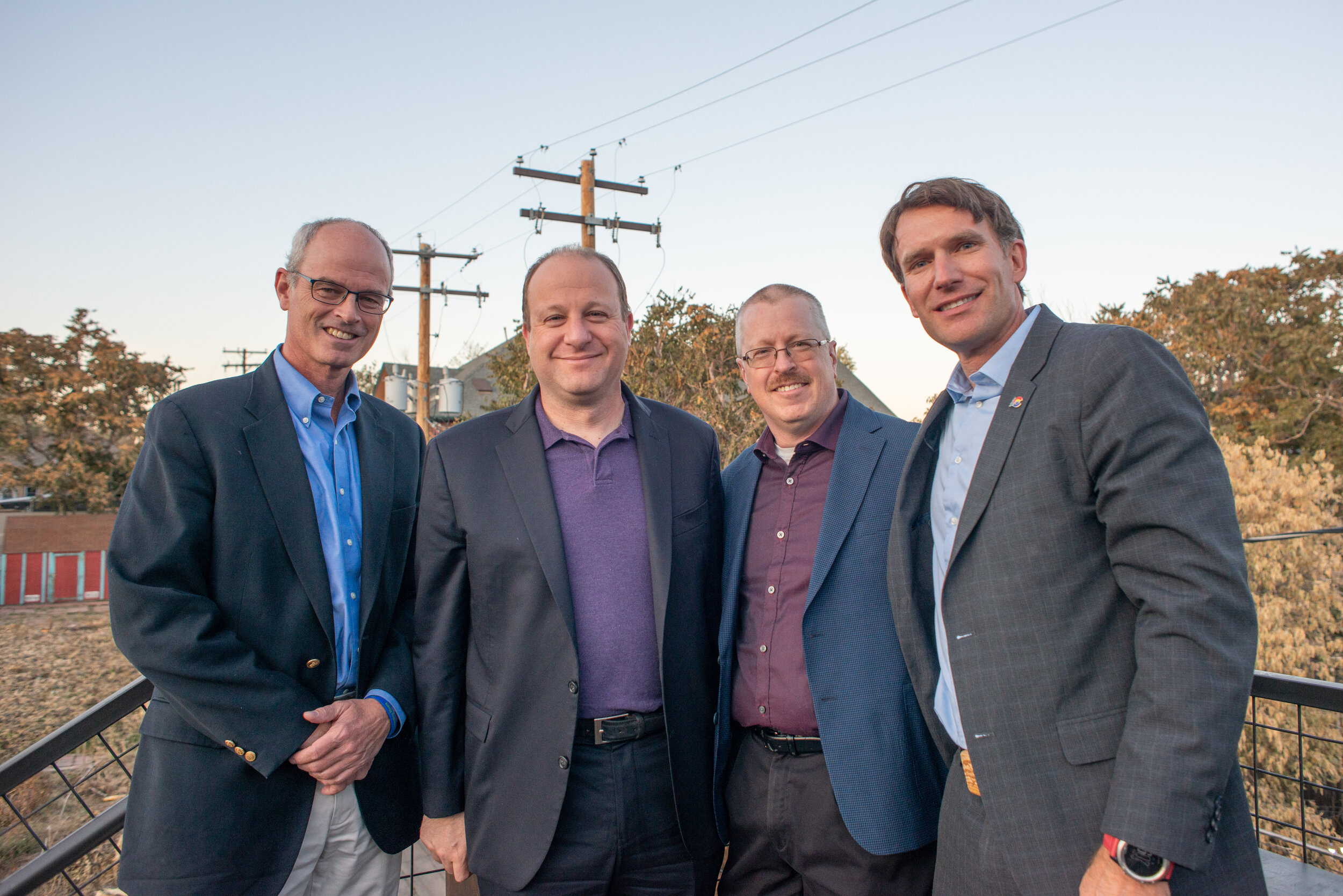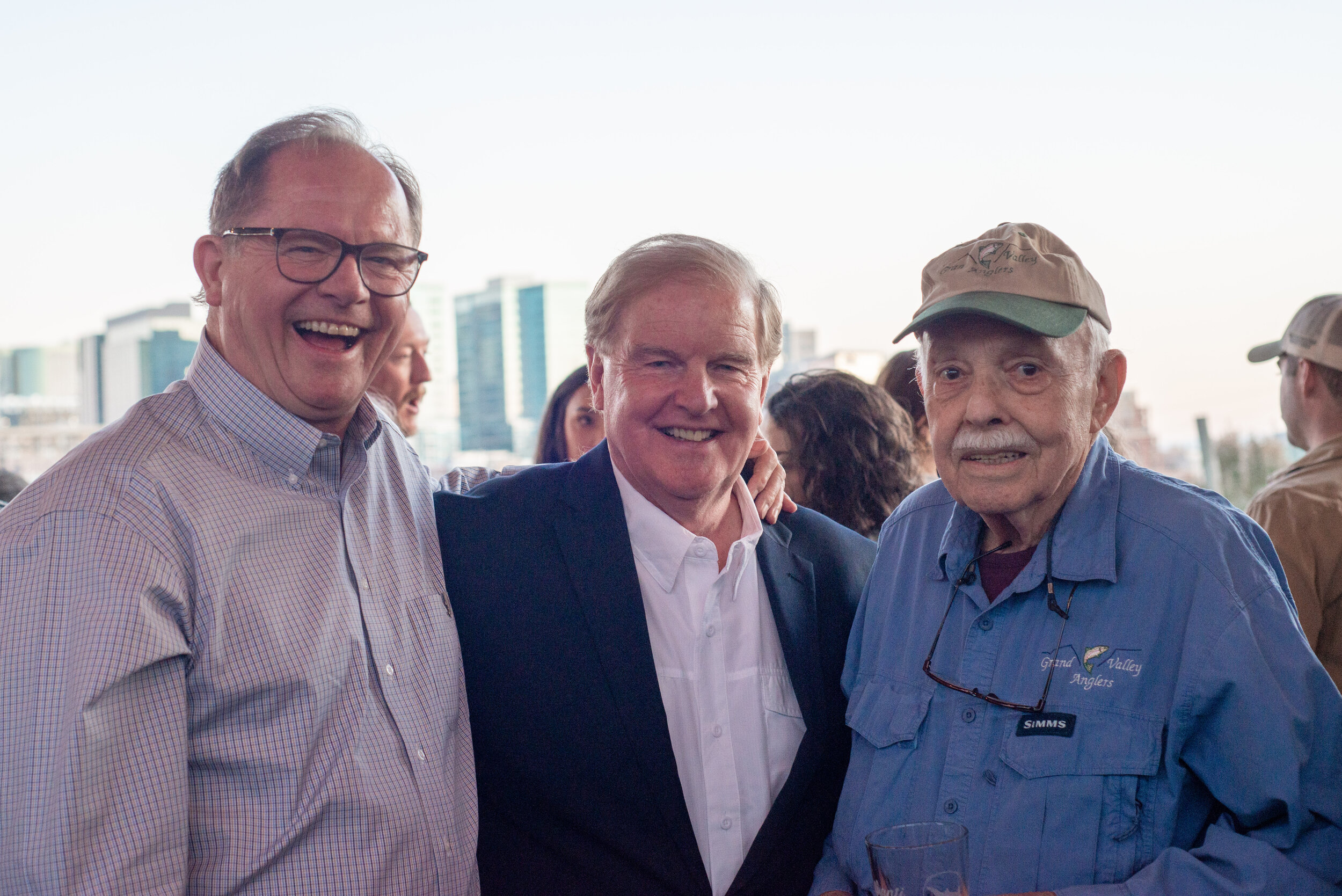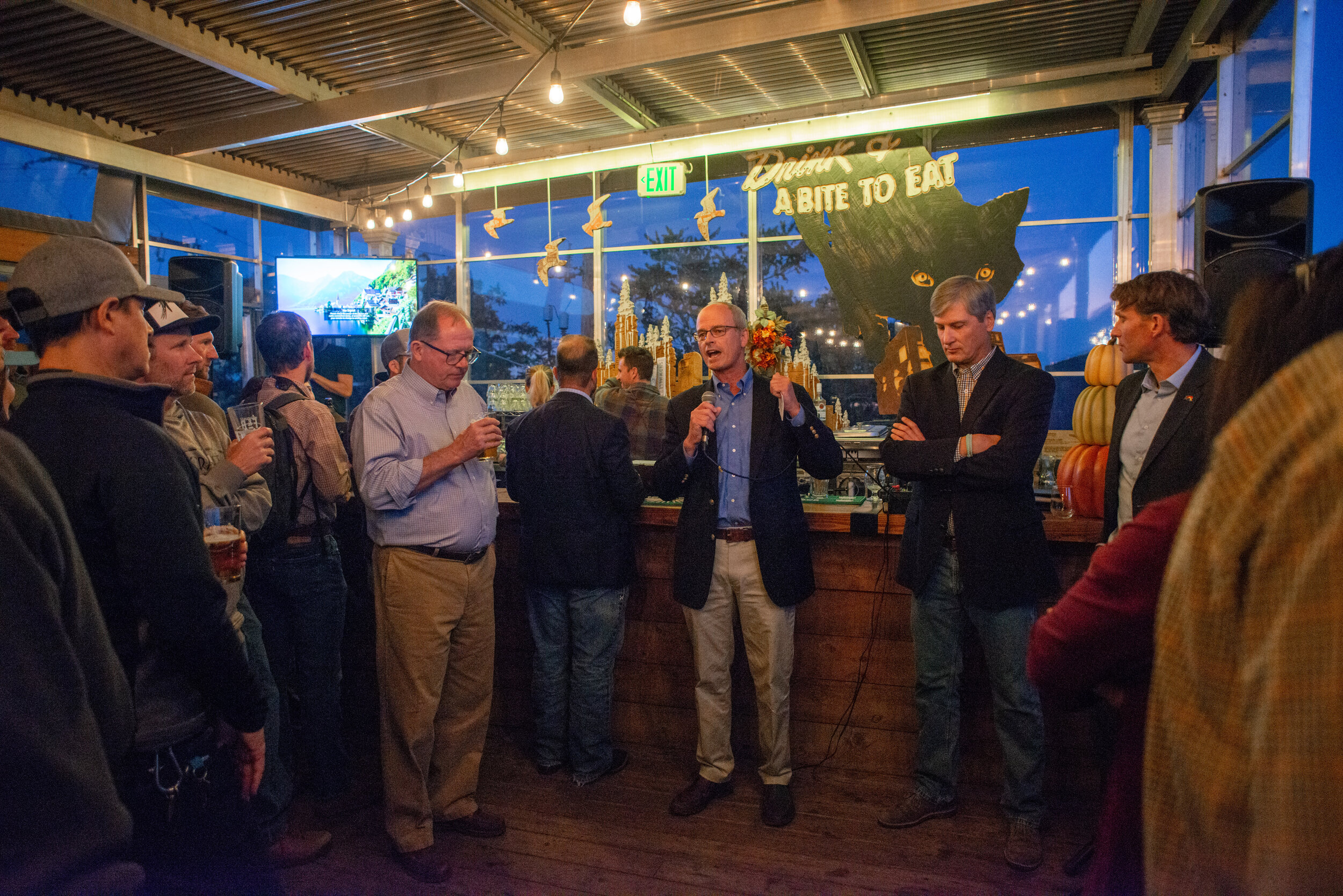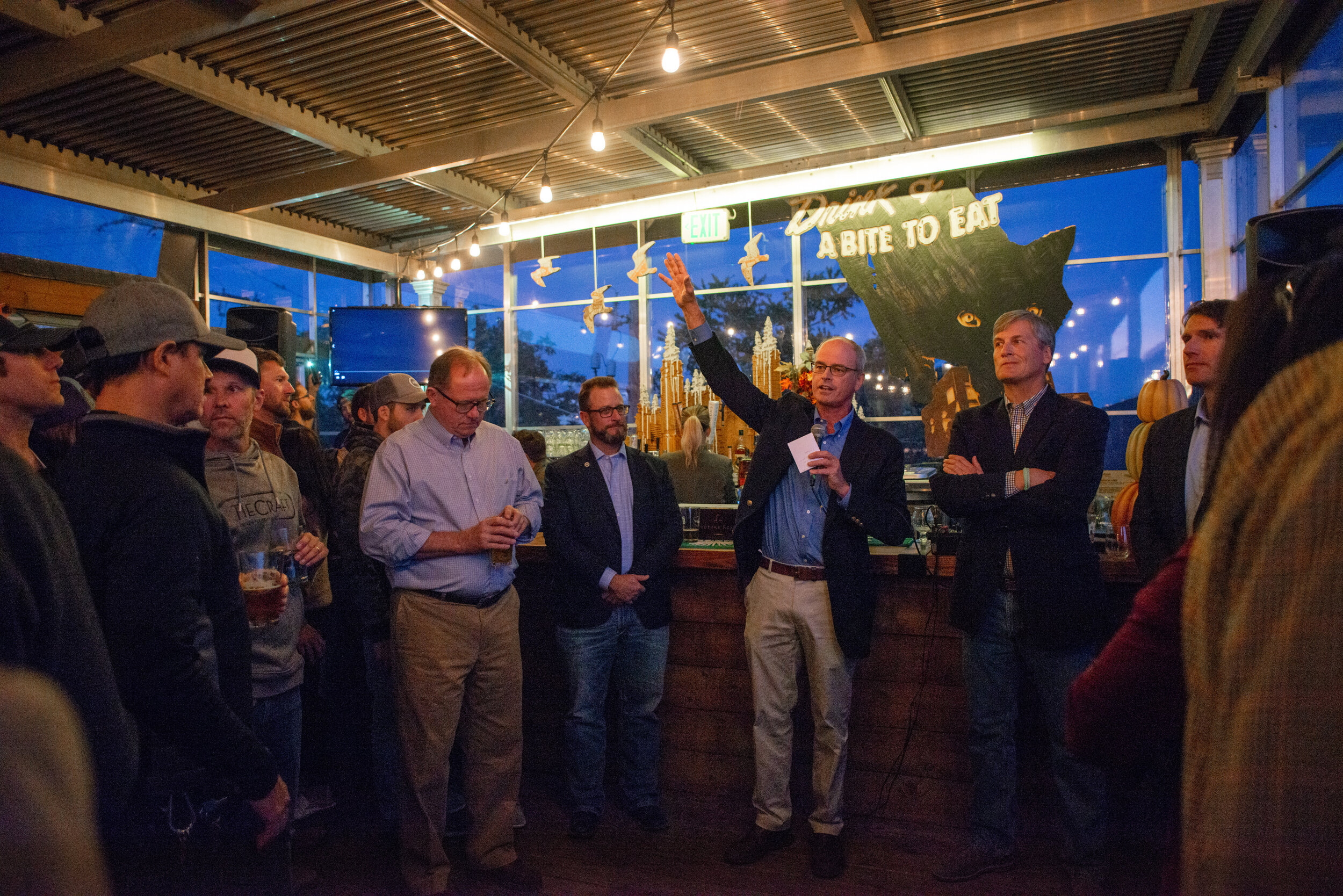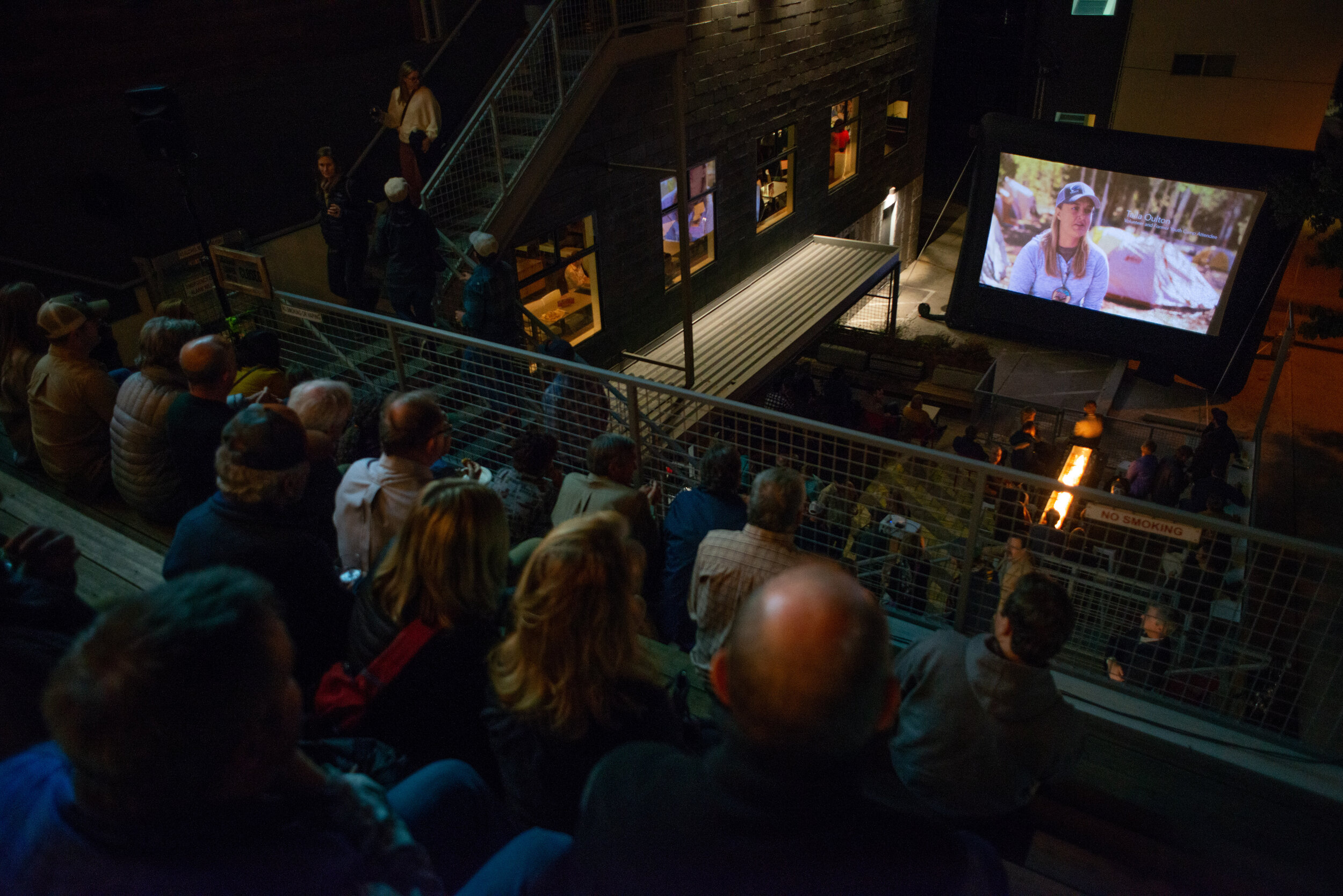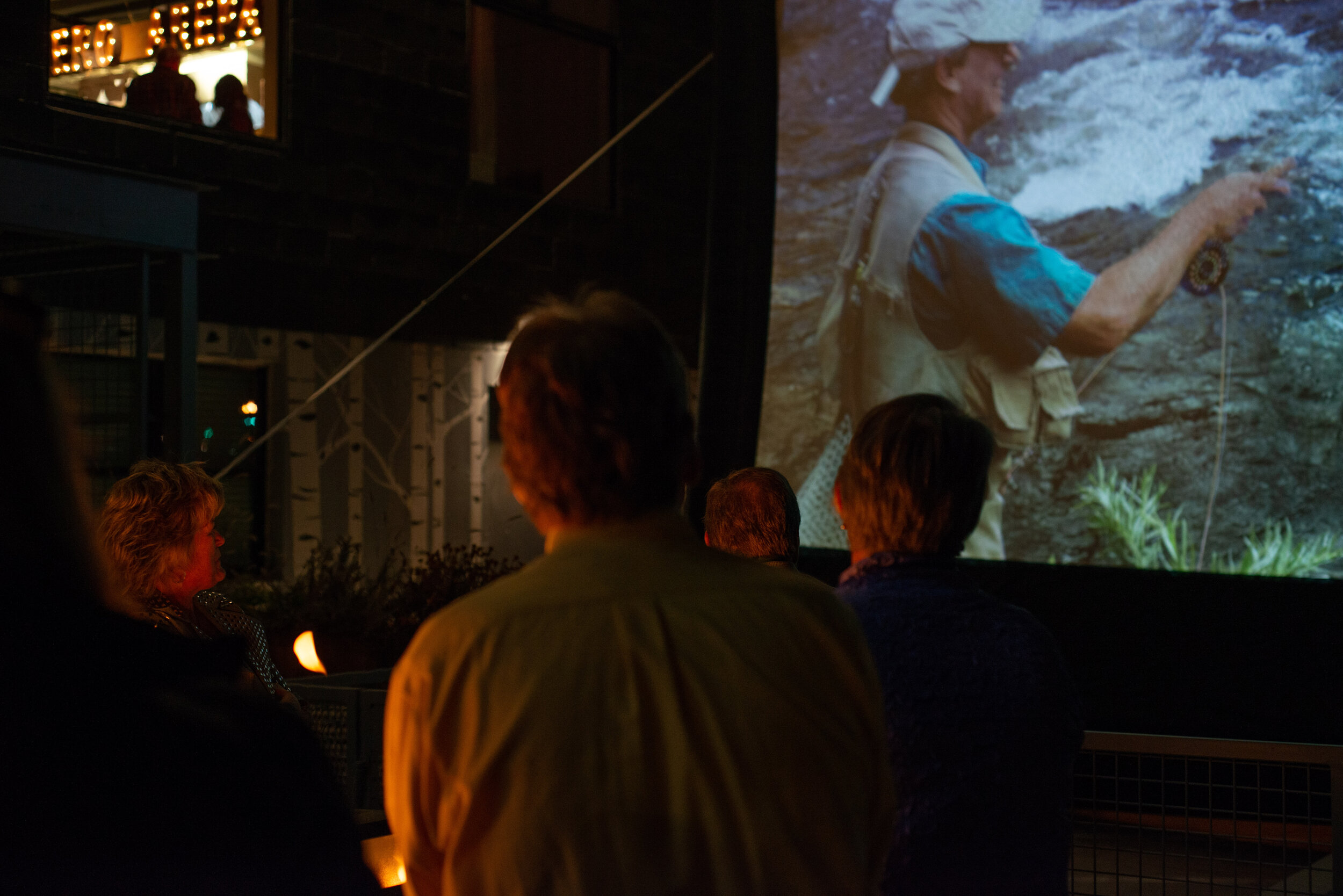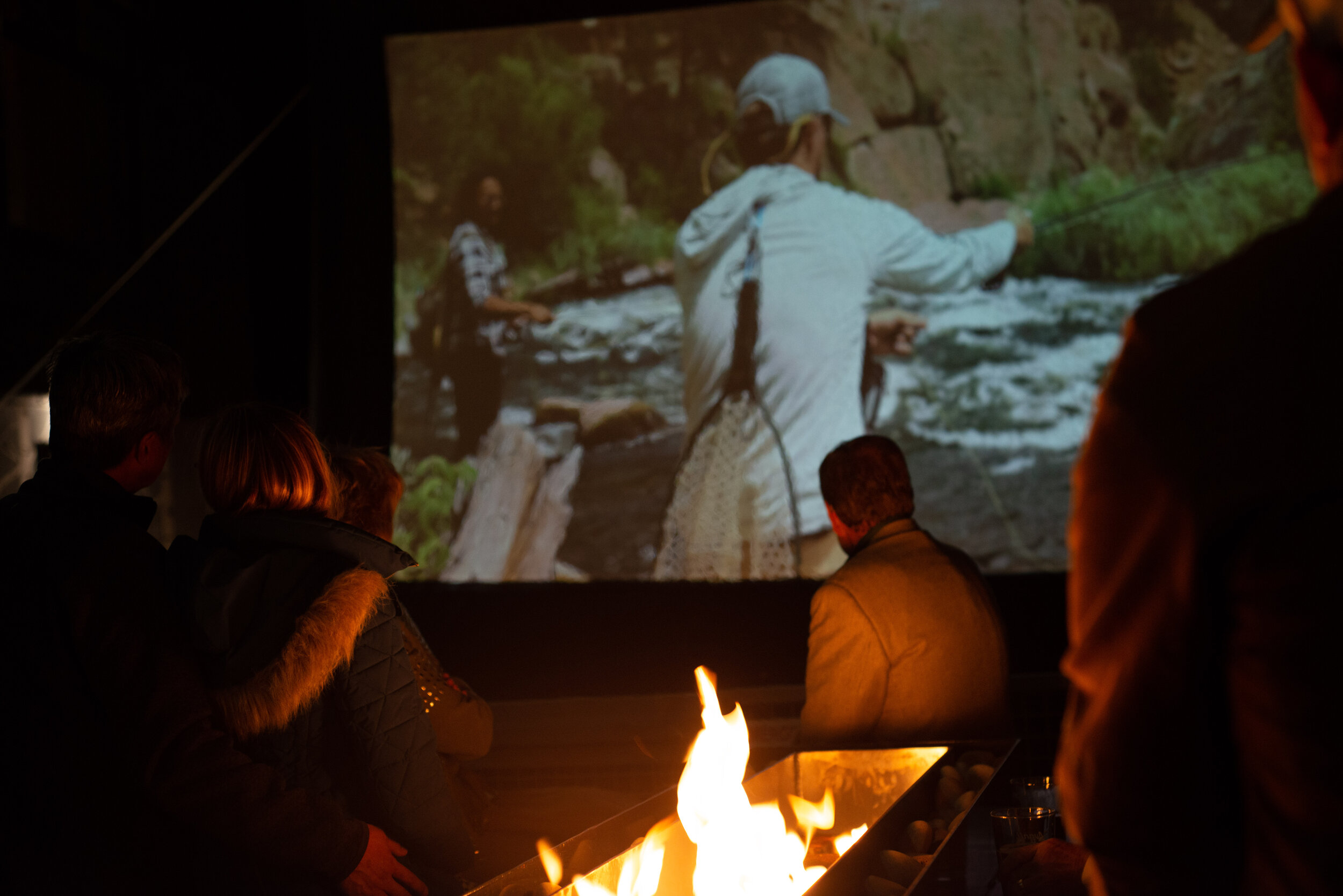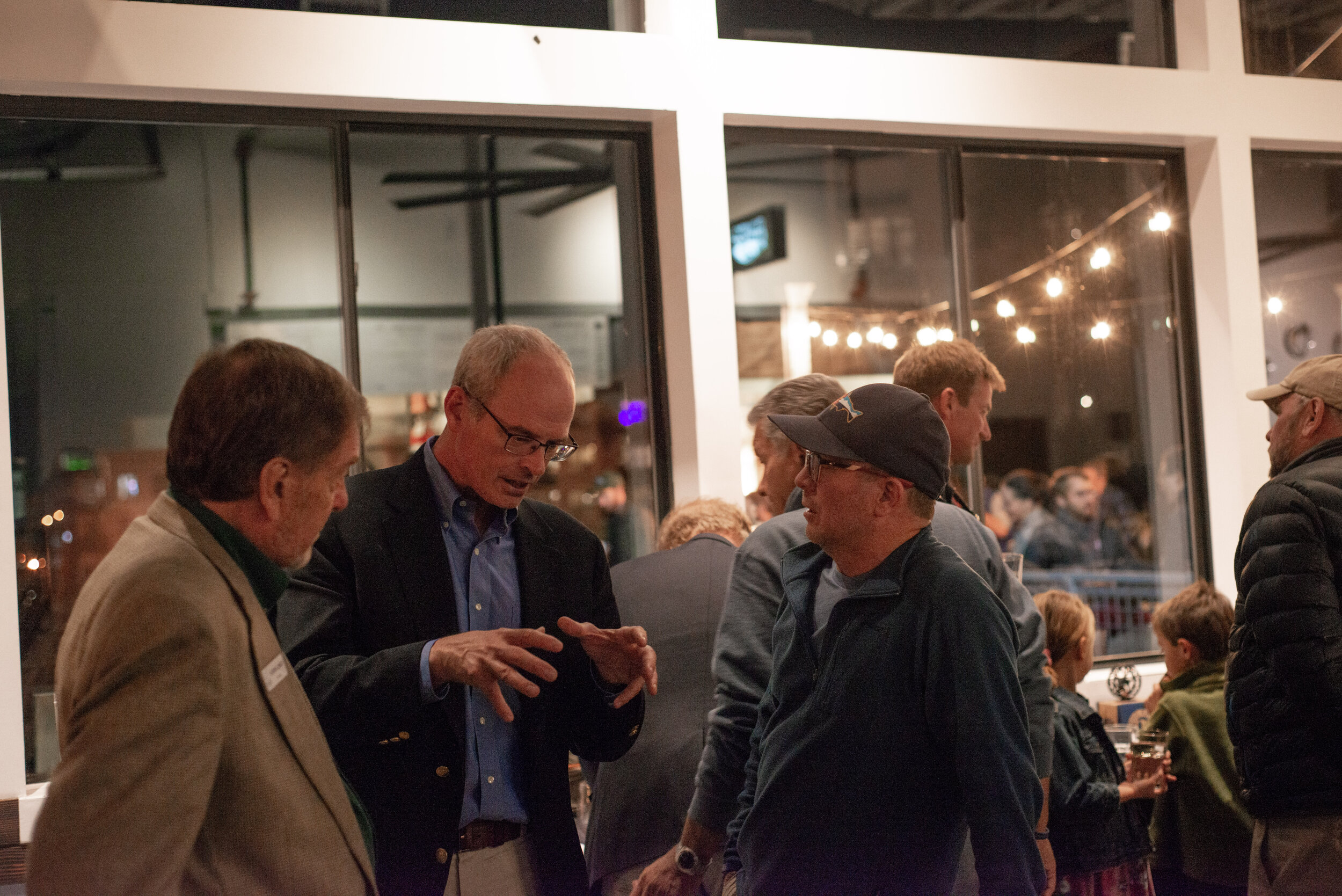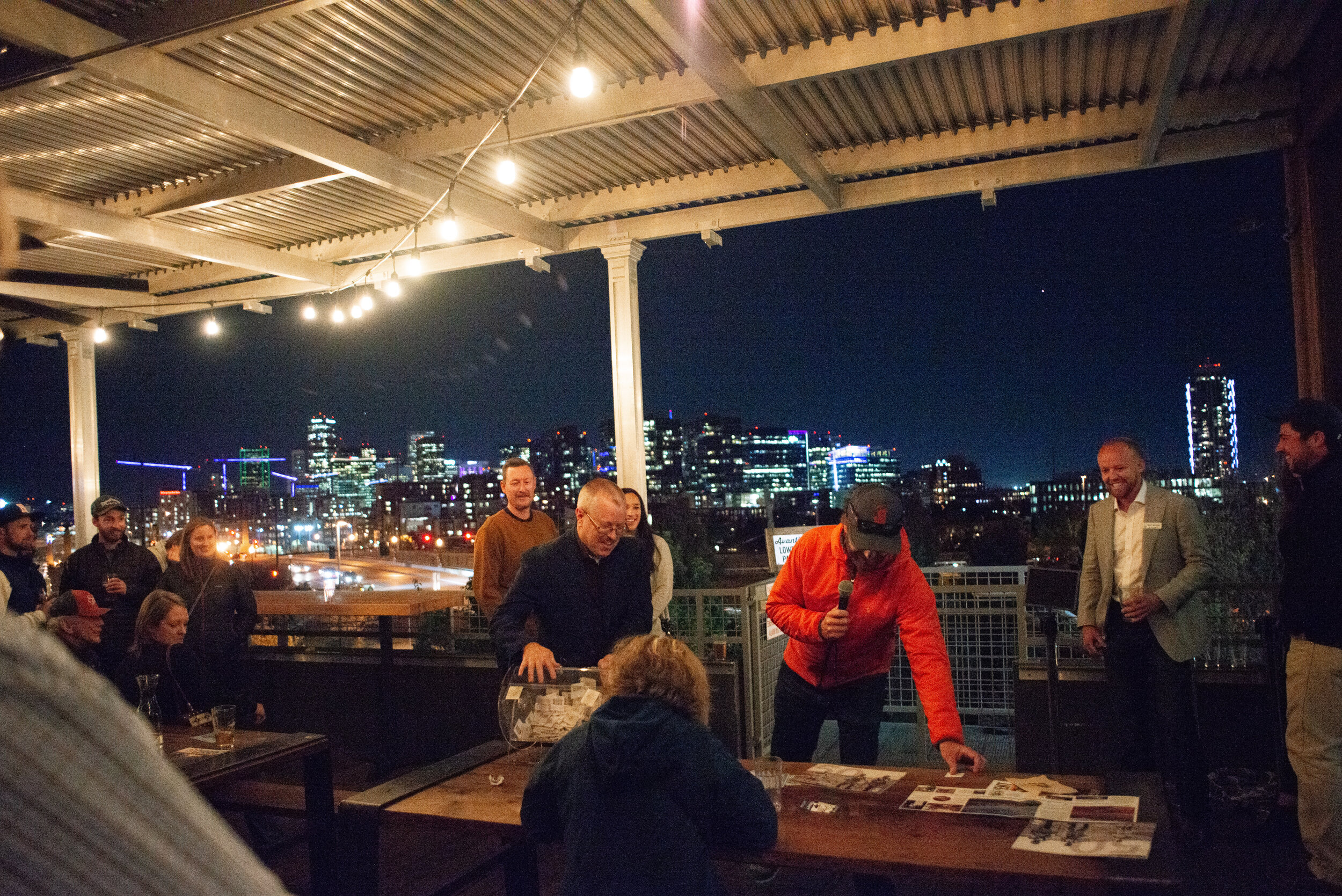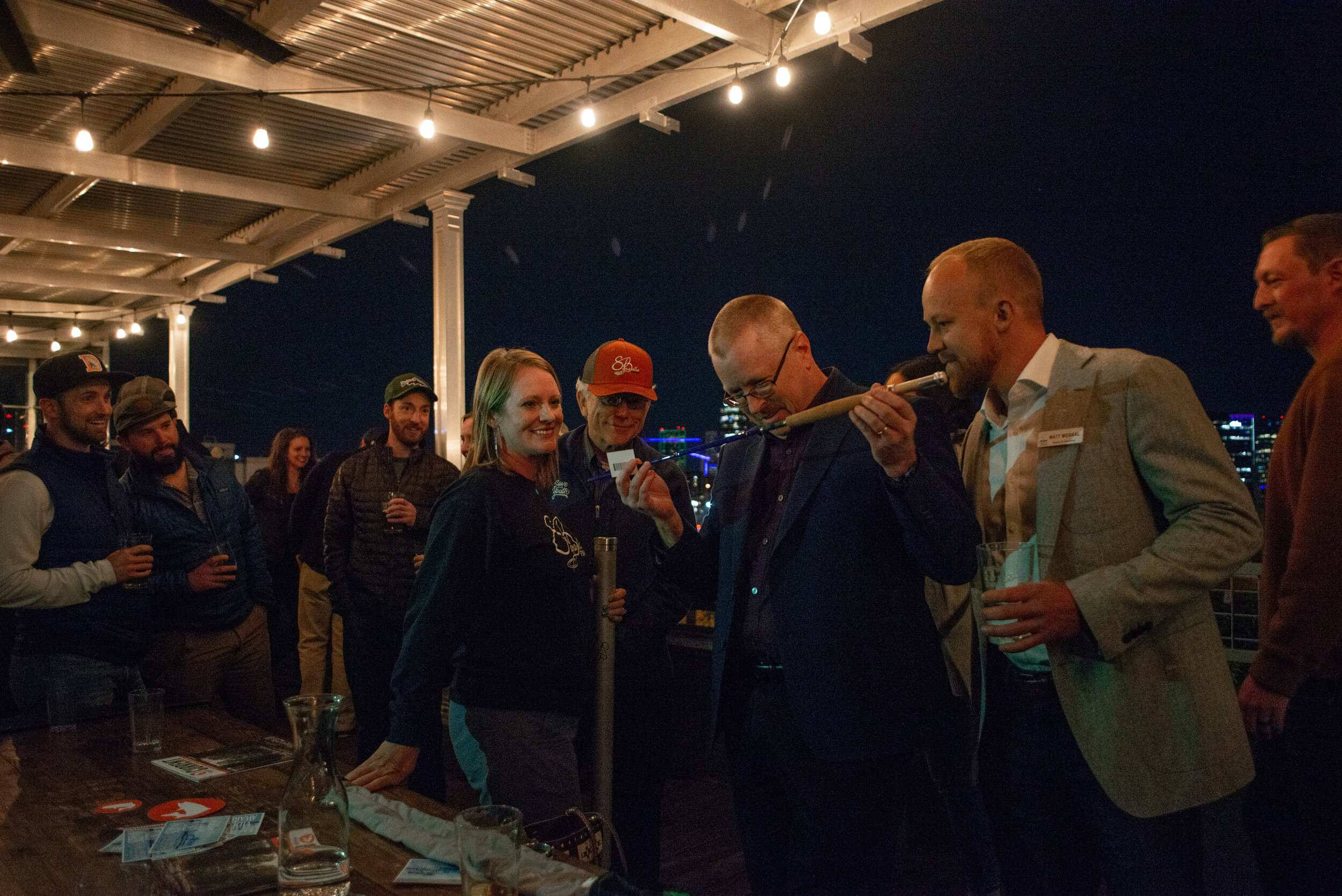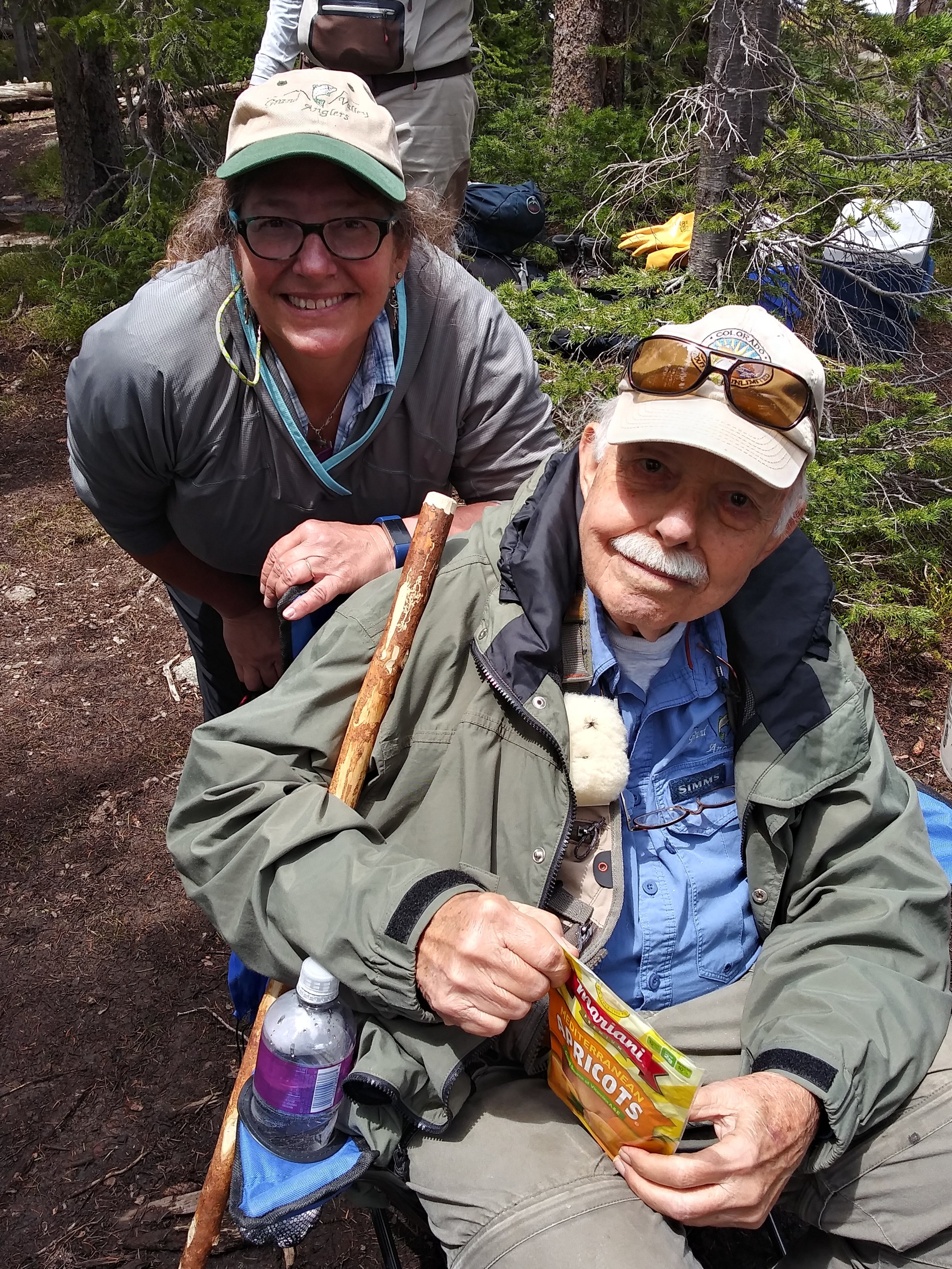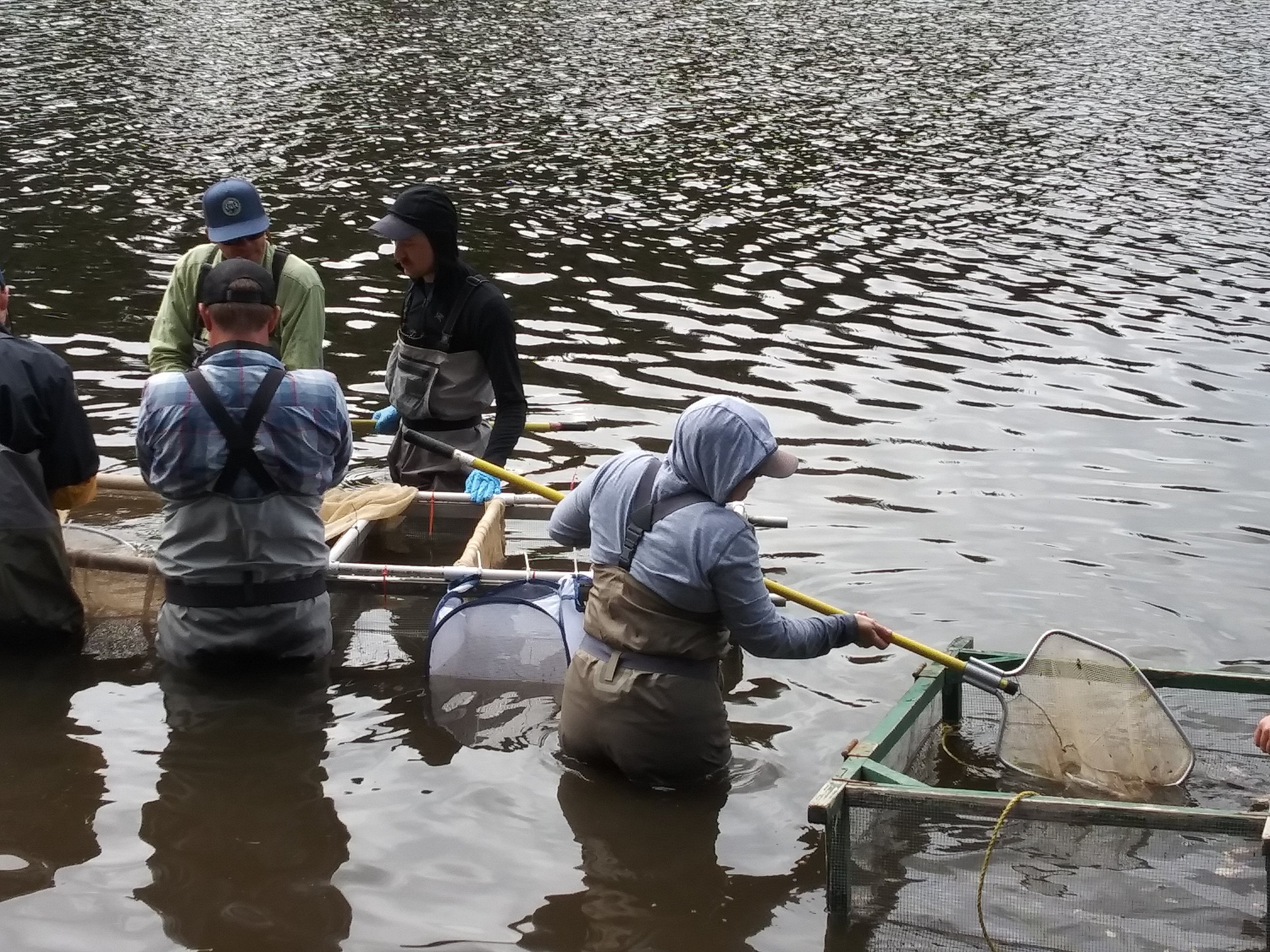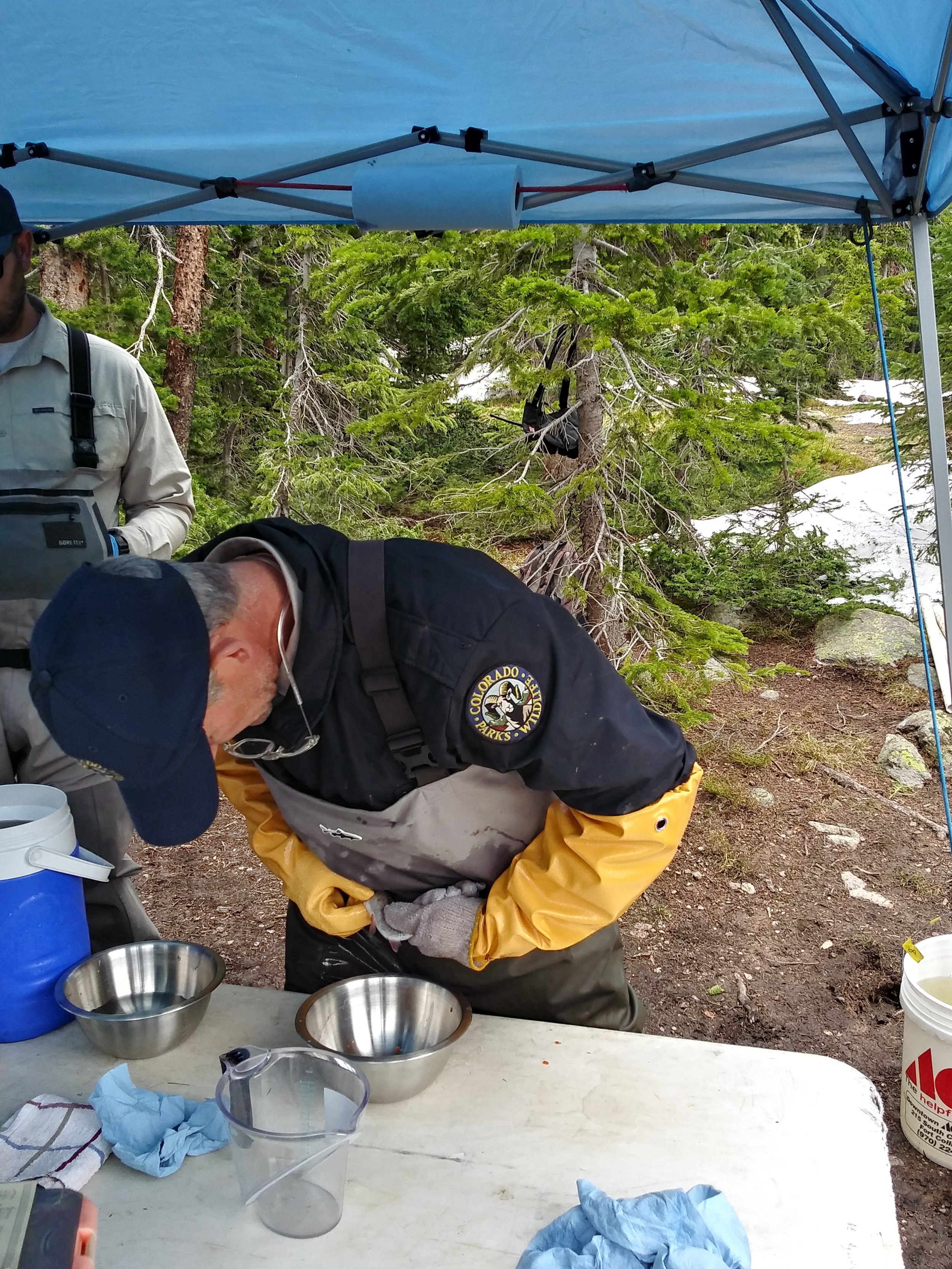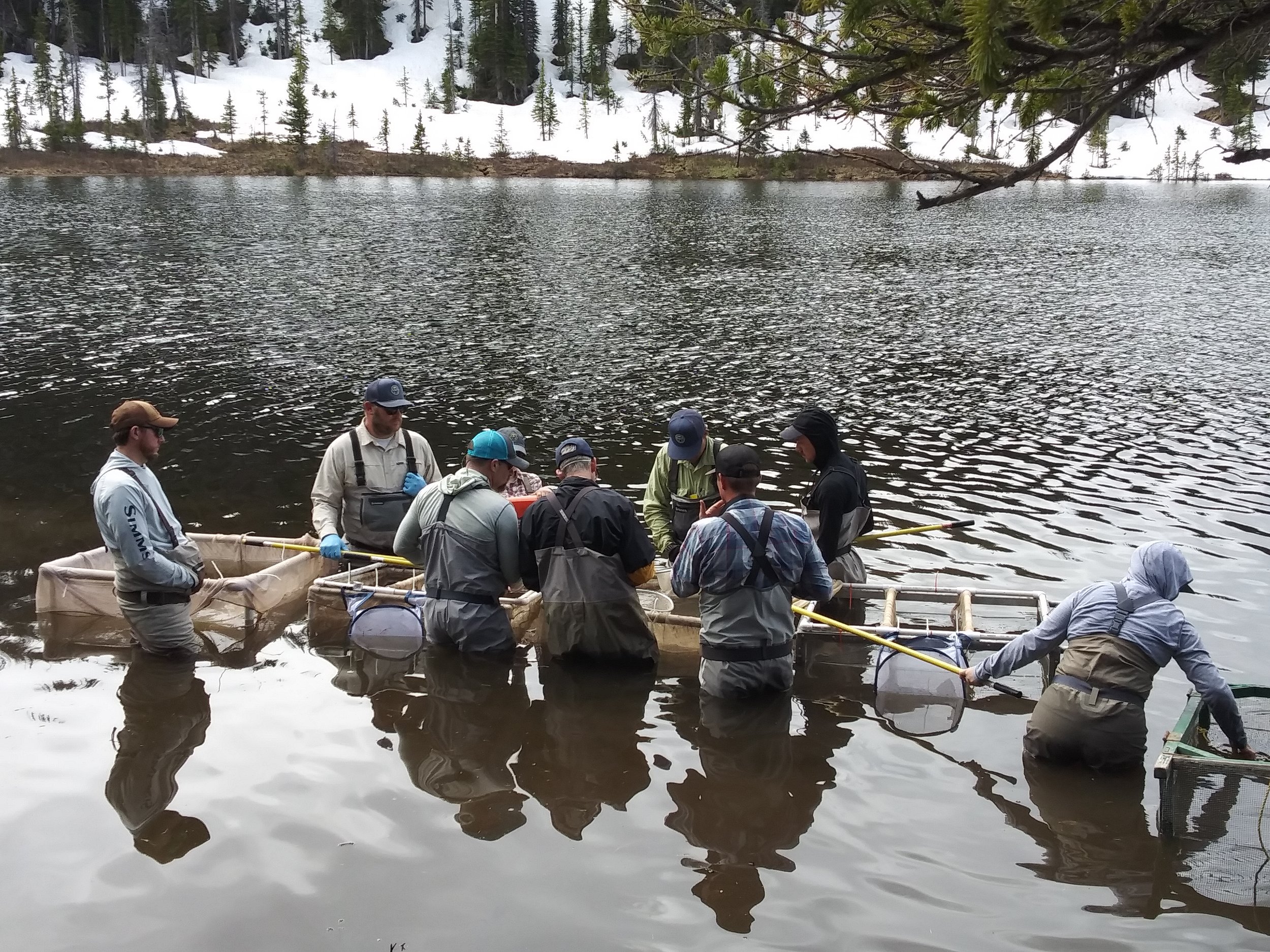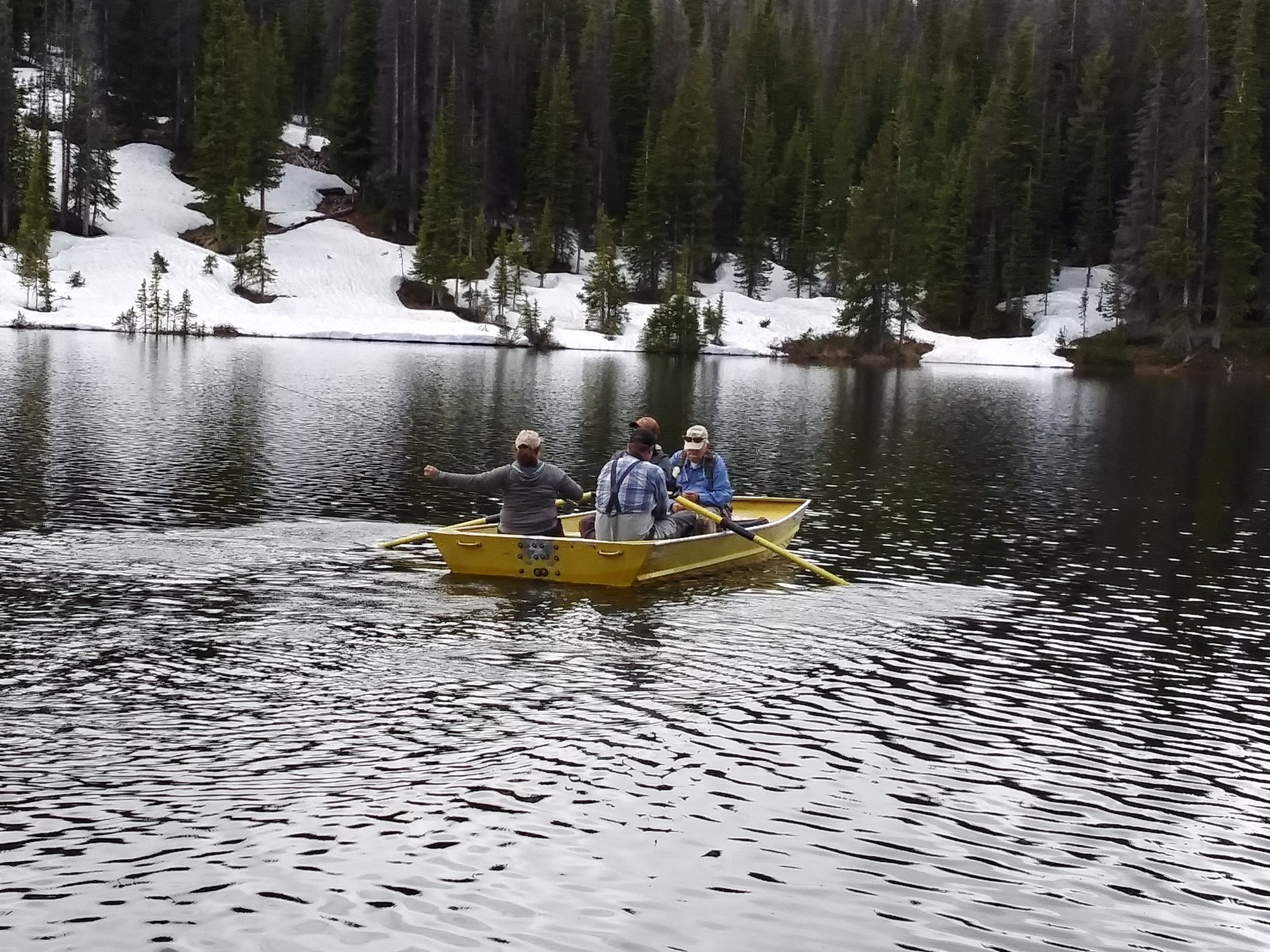Giraffes at Cheyenne Mountain Zoo
Press Release: Cheyenne Mountain Zoo Becomes ‘Water Neutral’ with Trout Unlimited Winter Water Offset Partnership
Feb. 5, 2020 (Colorado Springs, Colo.) – Running a zoo requires a substantial amount of water. There are guest facilities, water features in animal habitats, cleaning and sanitation, horticulture, food and beverage services, maintenance and, of course, human and animal water consumption to consider.
Leaning on his background in horticulture, environmental education and ecology, and his involvement in global conservation projects, Cheyenne Mountain Zoo President and CEO, Bob Chastain, decided to make Cheyenne Mountain Zoo the first ‘water neutral’ zoo in the world. So, he worked with the experts at Trout Unlimited (TU) to offset the Zoo’s water usage through a unique new program.
“We use about 16 million gallons of water a year,” said Chastain. “In the last several years through our own internal programs, we’ve reduced our water usage by about half, but we still use a lot of water. We live in a drought state, so I wanted to find a way to give that water back, so to speak, to the rivers in Colorado. With Trout Unlimited’s help, we can do that.”
A nonprofit organization dedicated to the protection and restoration of habitat for trout and salmon, Trout Unlimited (TU) operates a program in the Rio Grande basin of southern Colorado. Under the program, TU arranges for releases of water from storage reservoirs to augment river flows for the benefit of trout populations and the riverine environment. For water year 2020, which runs from Oct. 1, 2019 to Sept. 30, 2020, Trout Unlimited will release 51 acre-feet of water from storage to the Rio Grande River or its tributaries on the Zoo’s behalf. The Zoo donated $15,000 of conservation funds to Trout Unlimited to support these releases.
Chastain is an outdoorsman. He likes to spend time rafting, fishing, hunting and hiking in the wild places along the Arkansas and Rio Grande Rivers. Over the last few summers, he has noticed a distinct decline in river water levels between early and late summer.
“I was rafting the Arkansas River late last summer and the difference in just a month and a half, since I had last rafted it, was dramatic,” said Chastain. “That got me thinking that if there was some way to contribute to water levels when they’re low during the winter months, we could make an impact.”
Roughly ninety percent of Colorado’s water supply is used by farmers and ranchers, according to Trout Unlimited, and this agricultural water use drives rural economies. Rivers also support many important functions in our state: feeding diverse ecosystems of plants and animals; generating tourism and making an economic impact on local business through its fishing, hunting, camping and whitewater sports; and transporting water from reservoirs to those who need it.
“Water rights use and administration in Colorado is extremely complex and each basin operates differently. TU’s approach is to use local staff who engage with water users and facilitate opportunities to do more with a critical and limited resource,” said Kevin Terry, Trout Unlimited’s Rio Grande Basin Project manager. “For instance, TU can inform water users on the needs of the environment and fishery, identifying partnership opportunities that farmers and ranchers can take advantage of if it works for their operations. The whole effort is like a giant dynamic puzzle, and TU brings expertise relating to specific pieces, which helps the water community of the Rio Grande be strategic and holistic in efforts to maximize the benefits of our precious water.”
Cheyenne Mountain Zoo is supporting Trout Unlimited’s program to partner with water users and incentivize them to re-time portions of their water for delivery during the winter months when possible. Restoring stream flows below working reservoirs during the winter months, while simultaneously satisfying water-user needs, creates a better balance of water delivery for the environment, and the people who rely on it.
“We are grateful for our partnership with the Cheyenne Mountain Zoo,” said Terry. “With forward-thinking partners like the Zoo, TU is greatly improving habitat conditions for trout in the Rio Grande basin.”
Rachel Wright, Public Relations Manager
719.424.7856 rwright@cmzoo.org
About Cheyenne Mountain Zoo
Cheyenne Mountain Zoological Society was founded in 1926. Today, Cheyenne Mountain Zoo, America’s mountain Zoo, offers comprehensive education programs, exciting conservation efforts and truly fantastic animal experiences. In 2019, Cheyenne Mountain Zoo was voted #6 Best Zoo in North America and CMZoo’s Rocky Mountain Wild was named #5 Best Zoo Exhibit in North America by USA TODAY 10Best Readers’ Choice Awards. It is Cheyenne Mountain Zoo’s goal to help guests fall in love with animals and nature, and take action to protect them. Of the 233 zoos and aquariums accredited by the Association of Zoos and Aquariums (AZA), Cheyenne Mountain Zoo is one of just a few operating without tax support. Cheyenne Mountain Zoo depends on admissions, membership dues, special event attendance and donations for funding.
About Trout Unlimited
Trout Unlimited is a national non-profit organization that works to protect, reconnect and restore habitat for coldwater fisheries.






















